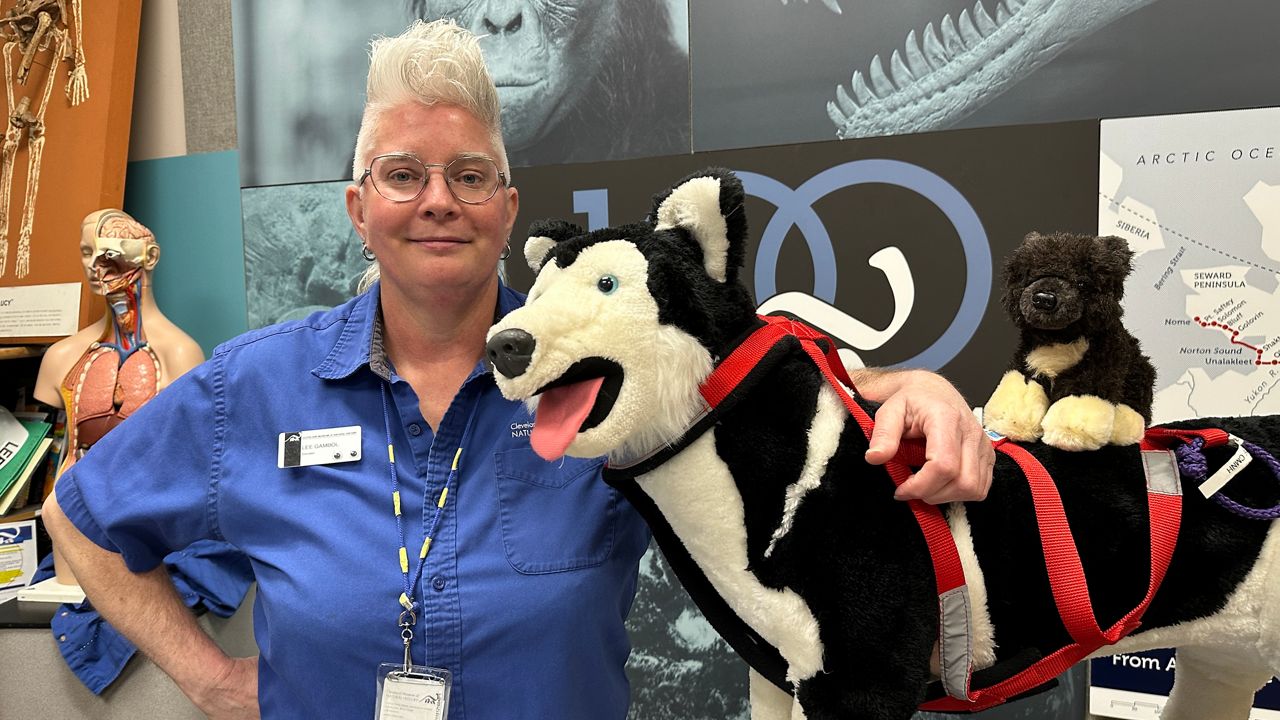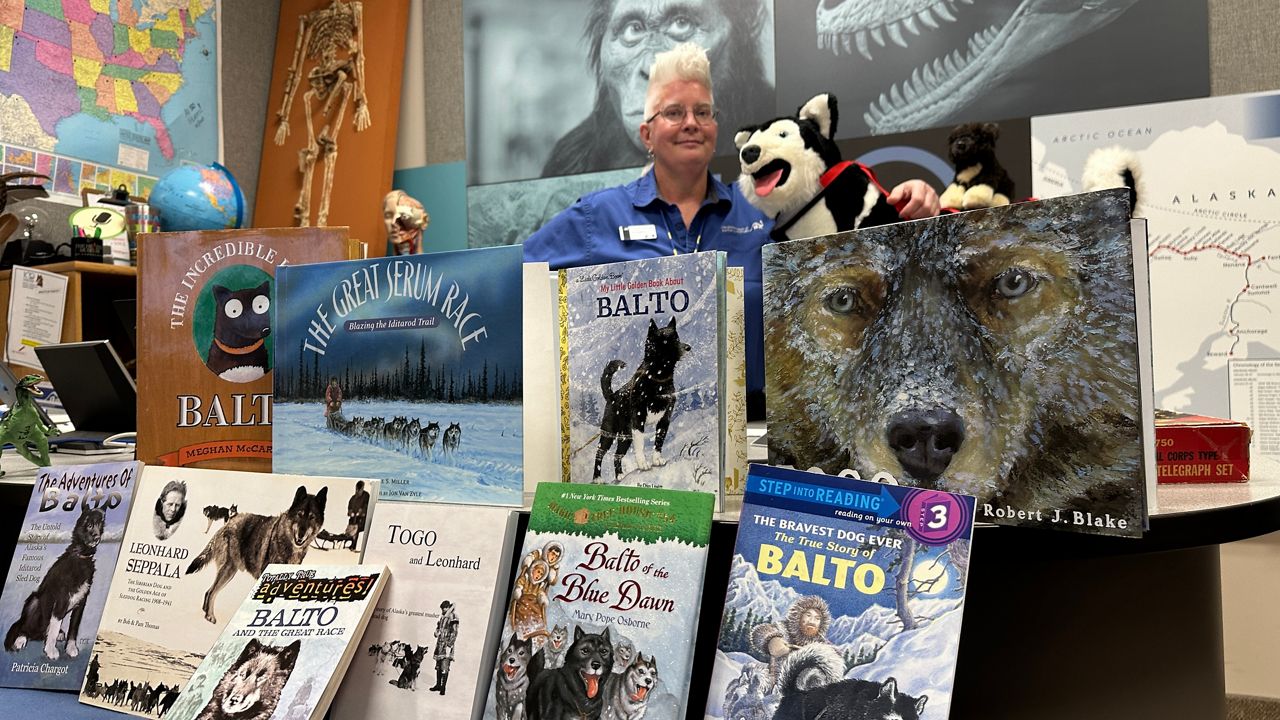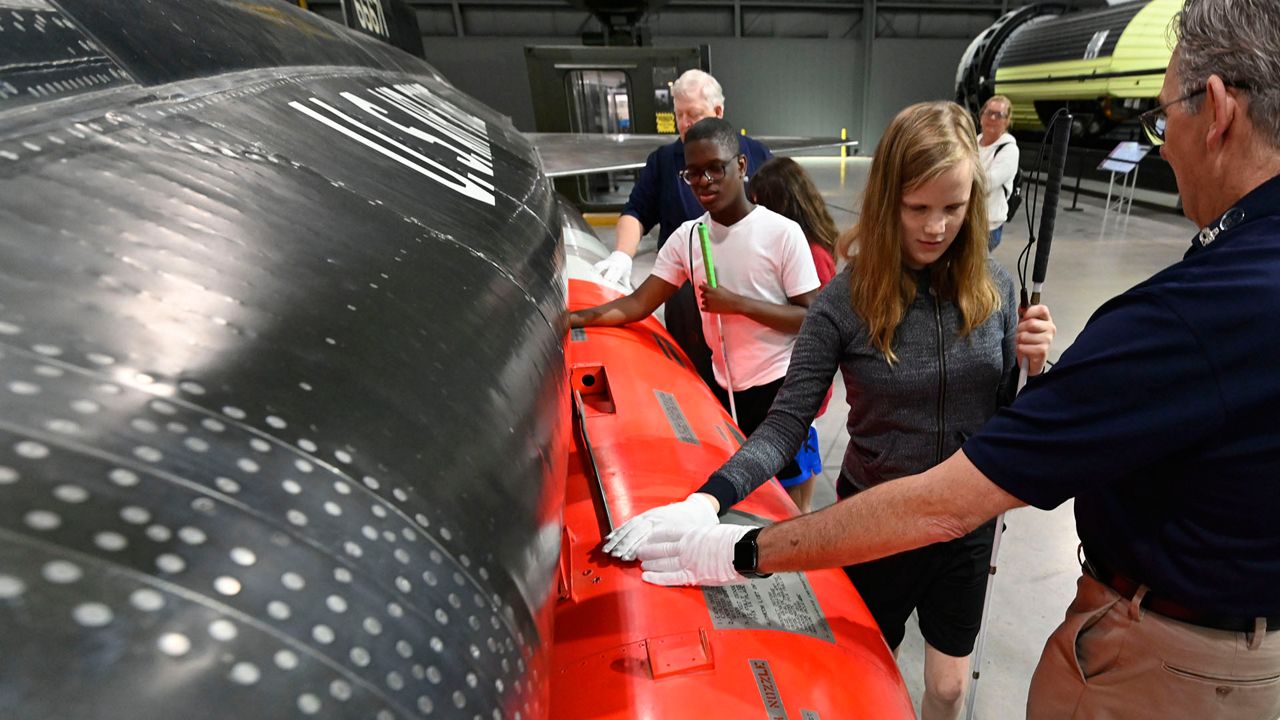CLEVELAND — One courageous canine is having an impact well beyond his life.
Born more than a century ago in 1919, Balto gained worldwide fame for his heroism by braving a blizzard to help deliver medicine to save an Alaskan town. Now, the husky is making history again by helping humans in a new way.
Balto’s story is one Lee Gambol knows well.
“It starts with kids needing help, dog saving kids, dog getting taken someplace bad, dog needing help, kids saving dog,” she said. “Whoa! It’s a perfect story!”
Few people decide their careers at age 6, but the Cleveland Museum of Natural History sparked Gambol’s curiosity.
“I turned to my father and said, ‘Daddy, I’m gonna work here some day,’” she said.
She now shares her enthusiasm as the interactive video conferencing coordinator and educator for the museum. The heroic husky’s one of her favorite topics.

“He was the lucky dog who came walking into Nome (Alaska) leading a team with the medicine on that fateful day,” she said.
It’s known as the “Serum Run,” when in 1925, dog sled teams formed a relay to transport a life-saving diphtheria antitoxin through a blizzard. Almost 200 dogs and 20 men volunteered to help cover the distance of three times the width of the state of Ohio.
Balto helped lead the last leg of the relay into the town. The task required not only a keen nose to navigate, but tremendous stamina to go the distance and withstand the treacherous conditions. Those strengths are something scientists are hoping to better understand.
“What the Zoonomia Project has shown, don’t get mad at me folks, he was kind of like a mutt,” Gambol said.
Following his death in 1933, Balto’s body was preserved through taxidermy and displayed at the museum. Recently, researchers extracted DNA from a sample of his skin.

“Where a seam of his skin had been sewn together, so they weren’t risking any damage to his body,” she said.
Gambol said they were looking for specific sequences tied to the traits that helped him survive those extreme environments.
“With taxidermy bodies, it’s just the skin basically, but the cells are still there, even though they’ve been chemically treated,” she said.
In the study published in the April 2023 edition of Science, researchers found Balto’s more genetically diverse than modern breeds.
That makes him what’s known as an “Alaskan husky,” Gambol said, and better equipped to thrive under those intense conditions.
“That’s the coolest part,” she said. “It proves that he was the result of very specific breeding to make a dog that was strong and tough, and had great endurance and could do its job really well.”
The dog who saved dozens delivering medicine nearly a hundred years ago, now delivering new insights.
“The whole project is looking at a human and how we relate to all these other species, and these very root abilities of just being alive that are common among all these organisms,” she said. “And that helps us to craft better medicines.”
Balto is not currently on display at the museum. He’s being refurbished off-site along with some other exhibits while the museum’s transformation project is under construction. He is scheduled to debut his new look when the facility’s visitor hall opens this fall.
The Cleveland Museum of Natural History’s entire $150 million renovation project is expected to be complete by the end of 2024.










